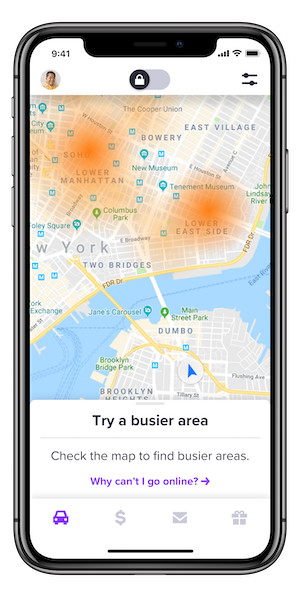Protecting your earnings during TLC changes

We’ve heard from NYC drivers that there’s some confusion about the connection between the app changes you’re seeing and how the TLC now calculates driver earnings. We hear your frustration and want you to know that we’re doing everything we can to protect your long term earnings and make Lyft work for you. Read on or watch below to learn more about how the TLC calculates driver pay, why we’ve had to make some changes to the app and how we’re supporting you with tips for success.
How does the TLC calculate driver pay? When it comes to driver pay, the TLC sets a minimum amount per trip. This minimum is calculated using Lyft’s “driver utilization rate.” Utilization is measured by the time spent with passengers in your car compared to time spent online without a passenger. The problem is, if there are too many drivers on the road and not enough passenger demand, each driver is less utilized, meaning you get fewer rides and lower earnings.
Remember, every rideshare company has a different utilization rate and will respond differently to the rules. In our case, we need to increase utilization to protect your long term earnings.
What’s changed? To keep utilization high, we’ve limited the number of cars that can be on the road based on passenger demand. This means when you’re online, you should receive more rides and be able to earn more per hour. Plus, you’ll spend less time cruising around. During periods of low demand, you might have to wait to go online or drive to a busier area, but we’ll show you where and when to drive to maximize your earnings.
What does the TLC’s rate mean for drivers’ long-term earning potential? In the short term, you may see an increase in hourly pay. But in the long run, the TLC’s rate is bad for your overall earnings. This is because per-trip minimums increase the price of passenger trips.
Why doesn’t Lyft charge passengers more? We know that when passenger prices go up, fewer passengers request trips, and demand goes down which is bad for your overall earnings. For example, in Feb 2019 when the TLC first increased the per-trip minimum, we saw Lyft rides drop 26% and driver earnings drop 15%.
How is Lyft supporting me through these app changes?
Guidance on where/when to drive: Your app will show you the busiest times and areas you should drive to increase your chances of going and staying online to drive. Look for the orange spots on your map - these indicate areas with high demand where you’re more likely to get rides.
Open driving times: You can always go online during these times because passenger demand is high. We’ll show you what the open driving times are for the upcoming week so you can plan ahead.
We’re here for you: We’re working hard to advocate for you. We sued the TLC because we believe the utilization calculation hurts long term earning opportunities for drivers and reduces competition. We’re pushing for fairer regulations that provide a long-term, sustainable solution that makes Lyft work for you.

Categories
PayTags
New York City